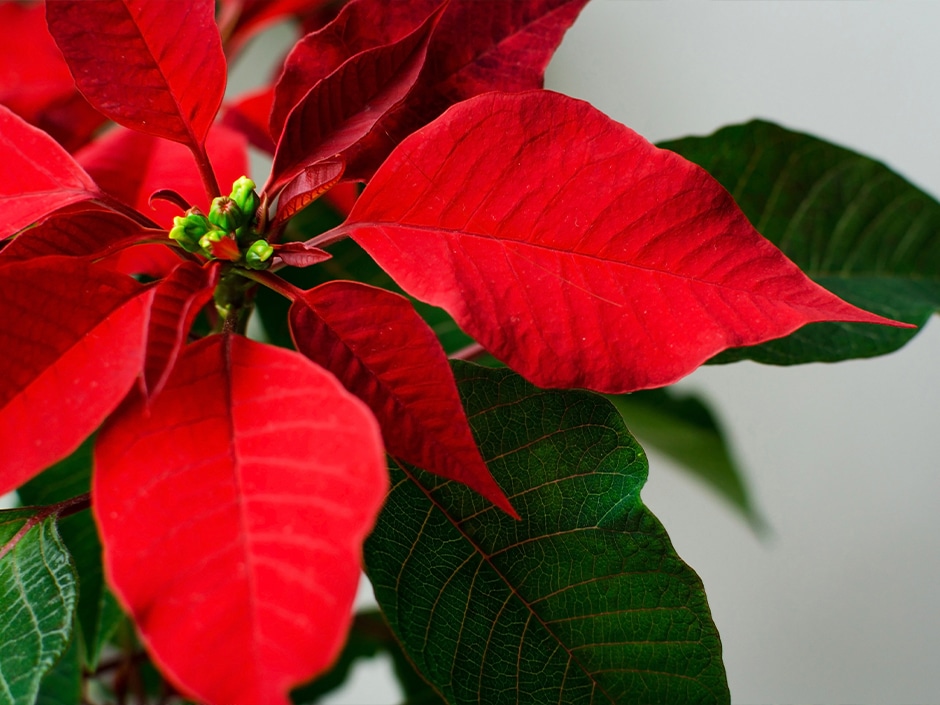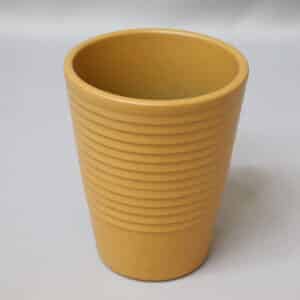How To Keep a Poinsettia Year-Round
Indoor plant tips

Poinsettias, also known as Christmas plants, remain one of the most popular holiday flowers, even though most are sold in just a six-week period. If you take proper care of your poinsettia plant, it will last well beyond Christmas and into the next year. Best of all, you might be able to force it to bloom the next holiday season. So, there’s no reason to get rid of the plant once Christmas is over. Follow these tips on how to care for poinsettias during the holidays and keep them thriving all year:
Pick the perfect poinsettia plant
What to look for: You want to choose a young, healthy poinsettia to bring into your home. The plant should be at least two times taller than its container. The foliage should be full, attractive and balanced-looking. Check that the foliage is dark green down to the soil.
What to avoid: The showy red, pink, white or bicoloured portion of the plant, popularly referred to as the flower, consists of modified leaves or bracts. Don’t pick plants with bracts, or leaves that are green around the edges. This colouring means it was shipped before maturity. Dip your finger into the soil. If it is wet and the plant appears wilted, it probably has root rot.
Poinsettia care and feeding
Location: Give your poinsettia flower the best chance of survival by finding the perfect location in your home. A poinsettia needs six hours of indirect light daily, but bright sunlight can cause some damage. Place your plant behind a screen or curtain near the window. Do not leave it in your garage or put it near a heating vent or cool window, and do not display it on top of a television.
Temperature: Keep the plant at a daytime temperature of 16°C to 21°C and about 13°C at night. Transfer the plant to a cool room at night, if necessary. Extreme warm or cold temperatures can damage the plant and lead to loss of leaves.
Water: Before watering, check the soil. Only water your poinsettia plant when the soil is dry. If you leave the plant in its decorative foil wrapper, punch holes in the bottom to ensure proper drainage. Do not let the plant sit in a drainage dish of water. Poinsettias thrive under humidity, so lightly mist the leaves occasionally. Water the plant immediately if you notice wilting and dropping of leaves. Wait a few minutes and water again.
Fertiliser: Feed your poinsettia with a soluble houseplant fertiliser once a month. Be sure to follow the manufacturer’s directions carefully. Avoid feeding while the plant is in bloom.
Pest control: Poinsettias are susceptible to pests that infest houseplants. Check the leaves of the plant regularly for insects like whitefly and gnats and for fungus. Washing the leaves can help keep insects at bay. If you find insects, treat the leaves immediately with insecticidal soap or an indoor pesticide recommended by a sales consultant at your closest Stodels Garden Centre.
Poinsettia care after Christmas
After the festive season, remove any dry or dead foliage. After the poinsettia bracts fall off, let the plant dry out. However, do not let the stems shrivel. Move it to a cool location of about 13 degrees.
In May, cut the stems back to 10cm above the soil. Repot the plant in a new container that is no more than 10cm bigger than the original container. Use a fresh potting mix without soil, but high in organic matter, like peat moss or leaf mould. Put the container in a sunny location and water it well.
In some cases, you can make your poinsettia bloom again. Start to force-bloom your poinsettia flower about 10 weeks before you want it to blossom. In late September or early October next year, place your poinsettia in darkness for 12 to 14 hours a night. Consider storing it overnight in a closet, box or cabinet. It’s important that dark conditions are strictly maintained as any stray light could negatively impact the flowering process. During the daytime, bring the poinsettia plant into the sun until it flowers.
For more care tips for indoor plants, read these blogs:




